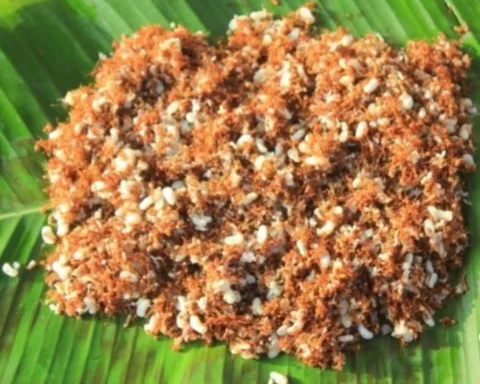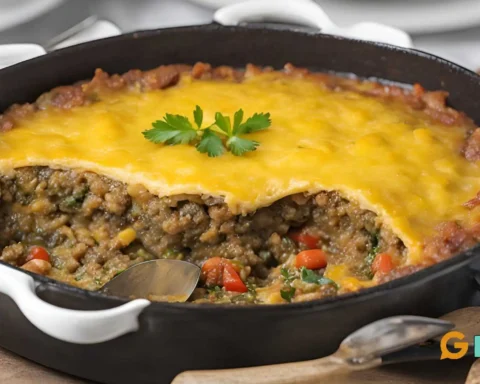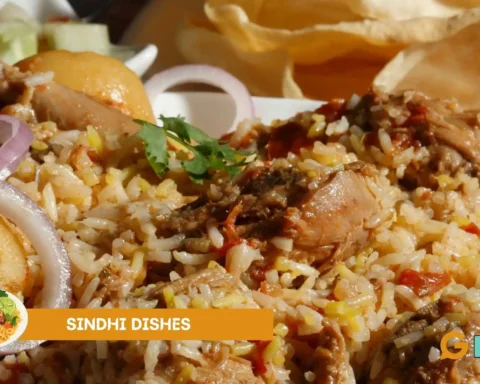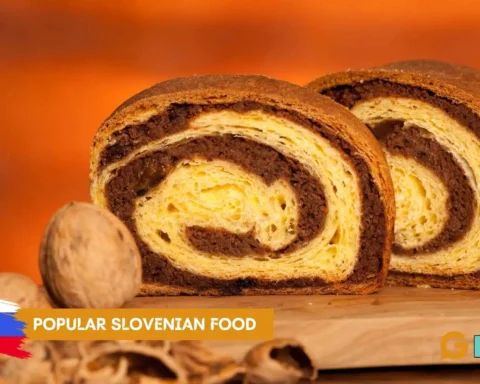Štruklji is a traditional Slovenian dish with flour-based pastries rolled with various sweet or savoury fillings. Enjoyed both cooked and baked, as a dessert or a filling meal, the versatility of Štruklji makes it a widely popular 'comfort food' across the Slovenian Alpine regions and their communities.
Read on to learn more about this iconic dish from Slovenia.
Table of Contents
Background
The dish and the linguistic term 'Štruklji' are derivations of the German "strudel", implying a swirl or a whirlpool. Its origins can be traced to the culinary practices of monastic communities as early as the 16th century, which may have spread to rural and urban kitchens. The earliest recorded recipe for štruklji is dated 1589, ascribed to the court chef of the Archduke of Graz, Austria.
The dish is historically rooted in celebration and festivity. Before commercialisation, it was prepared on special occasions to commemorate major agricultural events such as harvesting, fast days, and religious holidays. The tradition dwindled for some years following the Second World War, given the time-consuming process of preparing štruklji. It was preserved, however, by the efforts of a circle of Slovenian housewives who organised cooking classes and left behind handwritten manuscripts of recipes.
This dish has gained renewed interest and traction in the last two decades, especially among the younger Slovenians who recognise the importance and allure of homegrown farm products and traditional cuisines.
Where to Get Traditional Štruklji?
The most reputable establishment in the culinary business when it comes to the štruklji is the Moji štruklji Slovenije, based at Plečnik's arcade at Ljubljana's central market. With more than twenty varieties, its traditional approach to responding to the changing palates of the modern populace has been highly successful. This business has also singlehandedly been responsible for the term 'štrukljarnica' coinage to indicate bistros that solely serve štruklji.
Klobasarna, a fast food outlet in Ljubljana, serves a simple, cheap, traditional menu with fast and efficient service. Known for its original and high-quality products, it is the perfect place to stop for a quick bite.
Druga Violina, located in the old city centre, is a cosy and welcoming space with a colourful traditional Slovenian menu, including the well-known Ljubljana štrukelj. It employs several disabled people and occasionally hosts creative workshops for children.
Located at the hilltop of the popular hiking destination, Šmarna gora, Gostilna Ledinek offers a pristine spot to indulge in traditional štruklji and the pleasure of basking in the scenic view.
Variations of Štruklji
Although traditionally, štruklji was prepared primarily as rolled cheese dumplings (sirovi štruklji) in rural farm families where dairy and poultry were locally produced in abundance, modern variants of Štruklji are virtually endless. The versatile nature of the dish allows much room for experimentation and personal touches, down to the most basic ingredients. The buckwheat štruklji with walnut filling is one of the most popular varieties, second only to the cottage cheese dumpling.
Štruklji can be prepared with flat, unleavened filo (phyllo) pastries and leavened bread. A fine example of the latter is the Ljubljana Štruklji. This Danube area variant uses yeast-raised pastry with orange filling or apricot jam.
Popular seasonal filings like baked apples and tarragon are more commonly enjoyed during summer. Meanwhile, modern innovations with beans, carrots, spinach and chocolate have been readily accepted and embraced.
The kobariški štruklji, the speciality of the Kobarid region, even claims its festival in which participant chefs and homemakers present their unique and personalised varieties of štruklji.
The kobariški štruklji is known for bearing the chef's fingerprint, which they press onto the centre of the dumpling as a signature mark on their creation.
Recipe
There is no one way to prepare štruklji, but here we have presented the standard recipe for the classic filo pastry štruklji with cottage cheese filling.
Ingredients
Dough
- 350-400 g (2 cups approx.) flour
- 3 tablespoons olive oil / 2 tablespoons butter
- 200-300 ml (1 cup approx.) lukewarm water
- 1 egg, lightly beaten
- A pinch of salt
Filling
- 500g cottage cheese or ricotta
- 180g (⅔ cups) sour cream
- 2 eggs
- 2 tablespoons butter
- 1 teaspoon salt
Topping
- 60g (⅓ cup) breadcrumbs
- 3 tablespoons butter
Method
- To begin with the dough, pour the water into a bowl and add to the oil or melt the butter. Blend in the egg and salt with a fork or a hand whisk.
- In a separate bowl, place the flour, make a pit, and pour in the mixture of liquid ingredients. Knead till a smooth and even dough forms. Cover with a bowl and allow it to rest for a few minutes before kneading it again for a minute.
- Brush with oil or butter, wrap in a plastic wrap and refrigerate for at least an hour, or, even better, overnight. This increases the elasticity of the dough, making it easier to stretch.
- To work on the filling, combine the cottage cheese, sour cream, eggs and salt in a bowl and mix to perfection.
- Sprinkle a large tablecloth with flour and spread the dough with a rolling pin into a 14x20-inch rectangle until paper thin. Stretch gently, from the centre to the corners, for the most efficient outcome.
- Spread the cottage cheese filling evenly over the pastry, leaving 5cm around the edges. Roll the pastry into a Swiss roll form, beginning from the bottom and gently working your way up. Ensure that the dumpling is rolled tightly to prevent leakage. Wrap the roll in a kitchen towel or a double-thickness cheesecloth, and tie the ends with strings. Repeat the procedure with the remaining pastries.
- Pour 8 cups of water (2 litres) into a pot, add a teaspoon of salt and bring to a boil. Place the rolls gently into the pot and simmer with the lid on for 30-40 minutes. When done, transfer the cooked dumplings onto a baking sheet and let cool for 15 minutes before unwrapping them and slicing them into portions about 2 inches thick.
- To add an exciting dash of flavour to a topping, melt 3 tablespoons of butter over medium heat in a skillet and saute breadcrumbs in it until golden brown. Sprinkle over the Štruklji and serve warm.
Conclusion
Slovenia presents a community deeply connected through its culinary and gastronomical habits. Štruklji, more than a dish, is a cultural symbol transmitted through generations. Alternatively, institutional and communal workshops and events, such as the National Exhibition of Štruklji at Mirna Peč, exemplify the Slovenian community's sincere commitment to preserving, developing and uplifting their shared culture. For people who hold their culinary practices dear to their identity, this iconic dish has evolved into an emblem of Slovenian cultural heredity.
FAQs
What is a Struklji in English?
Štruklji in English may be called a rolled dumpling. It is similar in appearance to a Swiss roll, which may be cooked or baked and rolled with various fillings.
What food is Slovenia known for?
Slovenia is best known for its buckwheat dumplings with various exotic fillings. Among other well-known delicacies are the Carniolan sausage and the Kremna rezina.
Where did štruklji come from?
Štrukli originated in Slovenia from 16th-century monastic diets. The country's location at the intersection of the Alps, the Mediterranean Sea and the Pannonian Plain has ensured crossovers and blending with the culinary traditions of its neighbours, like Germany and Croatia. Štrukli's resemblance to the German strudel and the Zagorski Štrukli from Zagorje to its south makes it clear that it is the product of the mingling of different regional traditions.










